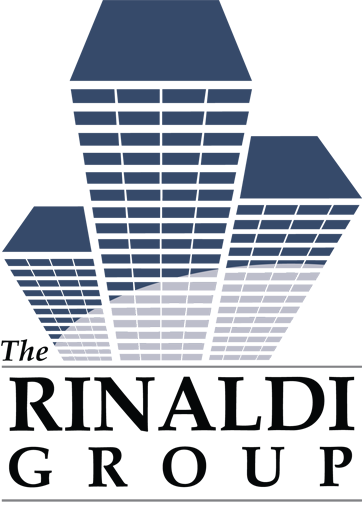Modern Home Builder: The Rinaldi Group
From Modern Home Builder:
The Rinaldi Group (TRG) is a full-service general contractor and construction management firm based in Secaucus, N.J., with satellite offices in New York City and Miami Beach, Fla. CEO Anthony Rinaldi started the company in 2003 after leaving Crain Construction, where he served as vice president, and later president, during an eight-year tenure dating back to 1996.
Rinaldi notes that although he left due to “irreconcilable differences” with the owner, he enjoyed playing a key role in helping Crain maintain business in excess of $100 million at the time.
Fifteen years later, TRG has earned a reputation for performance and execution. The company has more than 100 employees and focuses primarily on high-rise commercial hotels, and residential and office buildings in the private industry sectors. With more than $600 million worth of projects in its pipeline, TRG has come a long way from its early days of constructing sidewalks and curbs.
“I literally had to start all over again with nothing after Crain,” Rinaldi explains. “We have worked our way up from curbs to building 40-plus-story buildings throughout New York City. It’s been a long road and we’re very proud of our company.”
Keys to Success
Rinaldi’s background includes working for two of the country’s largest union general contracting and construction management firms, HRH Construction and George A. Fuller. In addition, over the past decade, there has been a significant shift from union to non-union labor in New York City, Rinaldi notes. He adds that more than 80 percent of permits for private projects today are in the non-union sector.
Ultimately, TRG has grown because of its work with non-union labor. “We are not only known among the largest non-union builders, but also the largest builders period in New York City,” Rinaldi says. “I believed this would set us apart from the beginning. I wanted to offer clients the technological ability and capabilities of the big union companies in a non-union setting.”
TRG was “operating terrifically” until 2008 when the market crashed, he relates. The company went from having eight projects in its pipeline to only two.
“Despite that, no one was laid off,” Rinaldi recalls. “We decided that we were all going to take pay cuts, including me. I told everyone that when it was over they would have their normal salary again. By 2011, I was able to do that and more. Since then we have never looked back.”
TRG has a strong, family-like culture, Rinaldi says. “We don’t have a lot of turnover,” he says. “The people who are with me today have been with me since the beginning. There are even some from Crain and beyond that. Our culture is great and they have contributed to our success.”
TRG also has longstanding relationships with its subcontractors. “A lot of these trades have become friends of ours,” Rinaldi says. “The relationship has gone from corporate to personal. These are longstanding relationships that, we believe, will stand the test of time.”
High Standards
TRG has the ability to perform much of a project’s work with its own in-house labor and equipment led by civil, electrical and mechanical engineers, licensed professional engineers and architects, certified and licensed cost engineers and estimators, OSHA-certified and New York City Department of Buildings licensed site safety managers, and project managers and superintendents.
“We also have field professionals that supervise the quality of the mechanical, engineer and plumbing trades,” Rinaldi says. “We cover every base at TRG to ensure we meet our clients’ needs.”
TRG not only has complete control of any project and its owner’s critical schedule, but also ensures the quality and integrity of a project through tight adherence to the architect and engineer’s drawings and specification requirements.
The company utilizes state-of-the-art tools – including Microsoft Projects and Primavera Suretrak – and monitoring techniques for project progress and development. In addition, TRG utilizes Revit, building information modeling (BIM) and CAD programs, which provide 3-D modeling for coordination between the different building disciplines and systems such as structural, architectural, mechanical, plumbing, sprinkler and HVAC design drawings.
“Whether we’re using CPM logic and scheduling techniques or Gantt bar-chart methods and analysis, our actual project performance is continually measured and monitored,” Rinaldi explains. “By constantly analyzing this information, we maintain the ability to proactively address scheduling fluctuations if and when they occur.”
Although TRG begins scheduling pre-award, scheduling is discussed “in great detail” with its employees, subcontractors and vendors. In fact, a potential subcontractor and vendor is not only evaluated for their pricing, but they are also qualified based upon their ability and commitment to perform the project within the planned constraints of the project. “We have bi-weekly coordination meetings throughout the term of the project, which enables a true teamwork focus and feeling,” Rinaldi says.
In addition, TRG applies tight controls when it comes to cost management. Cost control begins at the construction estimate, which follows the Construction Specifications Institute’s (CSI) divisional cost coding for all AIA trade classifications. TRG builds and purchases each construction item and activity directly from this well-detailed document.
“These baseline estimates are done using Timberline Precision Estimating computer software and are integrated with accounting through Timberline Construction Gold Accounting computer software,” Rinaldi explains. “Every material purchase, equipment rental and subcontract buy is cost-coded and recorded immediately, creating a single cost-coded system and control tool for every job.”
As each project develops, its costs are continually maintained and tracked by TRG’s project manager, who communicates regularly with the accounting department. “This makes sure that costs are monitored and audited, ensuring they align with the original baseline estimate and ultimately the project budget,” Rinaldi says.
With a successful cost-control system, TRG keeps a watchful eye on the future as well by developing an effective cost-trend analysis method, according to Rinaldi. “As projects move forward, industry trends and market changes are immediately realized, analyzed, documented and managed,” he says. “We not only consider the current project, but remain steadfast as a highly responsible bidder, general contractor and construction management group.”
Latest Projects
TRG’s recent projects include citizenM. The firm is project manager on the 22-story project; the world’s tallest modular hotel ever constructed is slated to open its doors this summer in New York City. Located at 185 Bowery, the 100,000-square-foot citizenM will consist of 210 pods or modular units, totaling 300 rooms.
In addition, it will feature a rooftop, lobby, and plaza amenities. “citizenM is a European hotel developer and operator based in the Netherlands,” Rinaldi explains. “We’re working with architect Isaac Daniel Astrachan from Stephen B. Jacobs Group. Together we are building the world’s tallest modular hotel ever built.”
Typically, modular buildings range anywhere from eight to 12 stories, he adds, noting that this building’s top two stories will consist of structural steel superstructure framing housing a top-of-house bar and amenities lounge. “We’re planning a temporary certificate of occupancy for mid-July,” Rinaldi says.
The high-rise 300-room hotel was built through an extraordinary process. Sealed units containing fully finished hotel rooms were factory-made and stacked together. The rooms were shipped in 210 pieces to New York from Poland. citizenM, which has nine hotels operating and 14 in development, has used modular construction to build the majority of its properties in Europe, where the technique is widespread.
By stacking together the factory-made, sealed units containing completely finished guest rooms, the process allows for faster building – generally about half the time of traditional construction. The number of truck deliveries is also cut by about half, thus significantly lowering the impact on the surrounding neighborhood, according to Rinaldi.
TRG is overseeing construction that consists of a four-story cast-in-place concrete pedestal with a 14-story hybrid concrete superstructure building core and shearwall.
“These pods are built in a controlled atmosphere in a factory, which means the quality control is at its highest level,” Rinaldi says. “All of the mechanical, electrical and roofing is already input into each unit. So when we received them, we basically stacked and connected them like building blocks.
“We make sure that everything works,” he continues. “Modular construction is something that is starting to take root not only in New York City, but also across the United States. A number of the major hotel chains, including the Marriott, are becoming interested in it.”
On Schedule
TRG is also working on HAP8. The New York City project consists of two adjoining 20-story towers, one residential and the other a condominium, totaling 201 units across 310,000 square feet.
“We started construction last spring in April and anticipate completion in late 2019,” Rinaldi says. “It’s located in midtown Manhattan’s Chelsea neighborhood, which is a cultural hot-spot and home to some of the world’s best art galleries, restaurants and bars. It is also close to High Line Park with tree-lined paths and views of the Hudson River.”
A majority of the amenities will be housed in the residential building; however, both buildings will enjoy several amenities including a state-of-the-art gym, swimming pool, yoga studio, childcare center and nearly 100 parking spaces. The condominium will have retail space located on its first floor.
TRG is currently working on the most complicated part of the project, which is the support of excavation and foundation, according to Rinaldi. “We’re driving sheet piling, and it’s a very sophisticated and difficult foundation,” he says. “A lot of this construction is called secant, which holds back neighboring properties and structures.”
In addition, the site still had buildings that needed to be demolished while TRG works on the excavation. “We received different approvals at different times,” Rinaldi explains. “So we had to phase the work that we had done around demolition. This isn’t an easy thing to do because there are crews working immediately adjacent to a building that is coming down.
“It made the sequencing and logistics a bit difficult, but we have been successful,” he continues. “Now, we have captured the entire site and have everything under control. It should get better from this point on.”
He adds that the subcontractors have been great to work with thus far. “Right now the excavation, foundation and superstructure are being done by Sky Materials,” Rinaldi concludes. “They have really done a solid job so far. DXA Studios is the architect and we have worked with them very closely. Their team includes Jordan Ragove and Wayne Norbeck, who both have been outstanding as well. We’re very excited for the final outcome of this project.”
Read more from Modern Home Builder…



